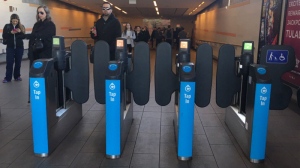Alberta’s population growth has been making headlines as it continues to break records, but recent reports are showing signs of strain within the province.
According to the latest data from Statistics Canada, Alberta’s population grew by 1.7% in 2020, reaching a total of 4.4 million people. This marks the highest growth rate in the country, surpassing the national average of 0.9%.
While this may seem like a positive trend for the province, experts are warning that the rapid population growth is putting a strain on resources and infrastructure. The increase in demand for housing, healthcare, and education has led to rising costs and longer wait times for services.
In addition, the influx of newcomers has also put pressure on the job market, with many struggling to find employment in their field or facing competition for available positions.
The strain is particularly evident in Alberta’s major cities, such as Calgary and Edmonton, where the majority of the population growth is concentrated. These cities are facing challenges in keeping up with the demand for affordable housing and public services.
The COVID-19 pandemic has also added to the strain, with many newcomers facing difficulties in settling into their new lives due to restrictions and closures.
Despite these challenges, the Alberta government remains optimistic about the province’s population growth. They believe that the increase in population will bring economic benefits and contribute to the province’s recovery from the pandemic.
However, experts are urging for a more balanced approach to managing population growth, with a focus on sustainable development and addressing the strain on resources and infrastructure.
As Alberta’s population continues to grow, it is crucial for the government and communities to work together to ensure that the province can support and accommodate its residents in a sustainable manner.




